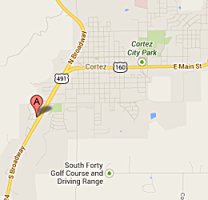Use these links to jump to different topics
Tests and Procedures
Home Safety For Newborns
Feeding and Nutrition
Well Child Check
Tests and Procedures Immediately Following Birth
- APGAR test
- done one minute and five minutes following birth through observation to assess how the baby is adapting to the world
- Vitamin K shot
- Antibiotic eye drops
- Hepatitis B Immunization
For more information on immunizations and the diseases they protect us from, go to the Center for Disease Control and Prevention website at: www.cdc.gov/vaccines/parents/index.html
Newborn screening
- a blood sample is taken by heel stick to screen for conditions and disorders the baby might be born with
- Hearing test
Home Safety for Newborns
- Always put baby to sleep on his or her back to help prevent SIDS (Sudden Infant Death Syndrome)
- The safest place for a baby to sleep is in a crib or bassinette with a firm mattress
- crib slots should have openings no wider than 2 3/8 inches apart to avoid injury
- no soft toys, pillows, blankets should be in the crib or around your baby while sleeping
- Keep room at a comfortable temperature
- babies can’t regulate body temperature as well as adults
- being too cold or too hot can be harmful for babies
- All babies cry this is how they tell you they need something
- if you have met all your baby’s needs (changing diaper, feeding, burping, cuddling, rocking) and your baby is still crying and inconsolable, you may want to call your health care provider’s office
- many providers have a nurse/physician on call that can provide support
- the only place that it is safe for you to leave baby unattended is in a crib that is free from any soft objects and choking hazards
- if you feel upset and overwhelmed about your baby’s crying, place the baby in the crib and go to a different room for a short break
- Never shake a baby
- Do not smoke
- if you or someone in your household does smoke, you can still protect you child(ren) from second-hand smoke by smoking outside your house and vehicle and away from your child(ren)
- washing your hands after using tobacco products is another good idea
BREAST FEEDING
Please consider breastfeeding for at least the first year of your child’s life. There are many benefits for both you and your baby, including but not limited to:
- the health of your child, especially a stronger immune system and easier digestion
- bonding between you and your baby
- the economic benefit of not needing to pay for formula
- a faster return to your pre-pregnancy weight
- freshly expressed breast milk can last in the freezer for up to three months
If you return to work while your baby is still nursing, you can express breast milk with a breast pump so you and your baby continue to receive the benefits.
- in Colorado, employers are required to provide unpaid breaks for breastfeeding mothers to express milk for up to two years after childbirth. Employers also must provide a private room other than a bathroom stall for breastfeeding moms to pump milk
- visit the Le Leche League website, www.llli.org for updates on legislation
Pumping your milk is also a good option if you are uncomfortable or unable to breastfeed. This is a very common practice for mothers of NICU babies that cannot latch onto the breast and must eat through a bottle, nasal-gastric tube, or even a gastric-tube. Breast milk provides great health benefits even if it is only part of a baby’s diet
Feeding and Nutrition
- An infant should always be fed on demand
- An infant will show you when he is hungry and when he is full
- A hungry infant may:
- cry and fuss
- kick arms and legs
- open mouth or make sucking motions
- A full infant may:
- stop sucking and let go of nipple
- look relaxed or sleepy
- fuss if you continue trying to feed
- A breastfed baby will nurse every 1.5-3 hours
- A formula fed baby will usually drink about 2-3 ounces every 2-3 hours
- Bottles should never be warmed in a microwave!
- set the bottle of milk in a bowl of warm water and test the temperature by dribbling a few drops onto the inside of your wrist
- Infants usually wake during the night to nurse or take a bottle
- keep the room as quiet and calm as possible
- never prop a bottle to feed the baby
- once the baby is finished, remember to place him/her “back” to sleep
- According to the American Academy of Pediatrics, breast milk or infant formula should be the sole source of nutrition for the first 6 months of life
Ask your healthcare provider about your child’s growth curve, this is a great way to tell if your child is getting adequate nutrition.
*Although these guidelines are appropriate for most children they may not fit all. Always consult your health care provider about specific nutrition needs of your child*
Well Child Check
3 Day & 2 Week
At these appointments your health care provider will check the baby’s weight and general health and may also ask some questions about how the transition to home life has been.
Topics to discuss with your health care provider:
- umbilical cord/circumcision
- jaundice
- “my baby sometimes is that normal?”
- feelings of being depressed or overwhelmed
- questions about how long baby should sleep
- questions about often baby should nurse/take a bottle, wet and mess a diaper
- recommendations for tummy time
- protecting baby from sickness
- questions/concerns about breast feeding


Connect With Us!